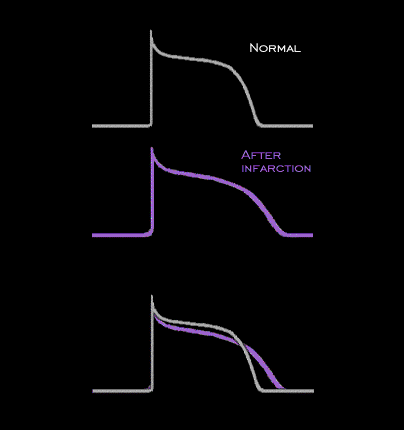
One factor responsible for these chronic T wave changes is a changes in the action potential of surviving cells within the ischemic zone. The action potentials shown here, adapted from the work of Wit et al (Circ. Res. 33:507, 1973), were recorded from canine sub-endocardial Purkinje fibers in the border of the infarcted zone. The prolongation of the action potential following infarction (shown in purple) is due to slowing of the phase of rapid repolarization (phase 3), implying persistent ischemia induced changes in the potassium channels. Another factor responsible fo the chronic T wave changes may be a change in the sequence of repolarization occurring secondary to the change in the sequence of depolarization that was caused by the infarction and resulted in the abnormal Q waves. This may occur either with or without the change in the repolarization limb of the action potentials demonstrated here.
